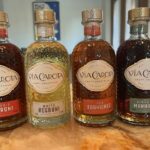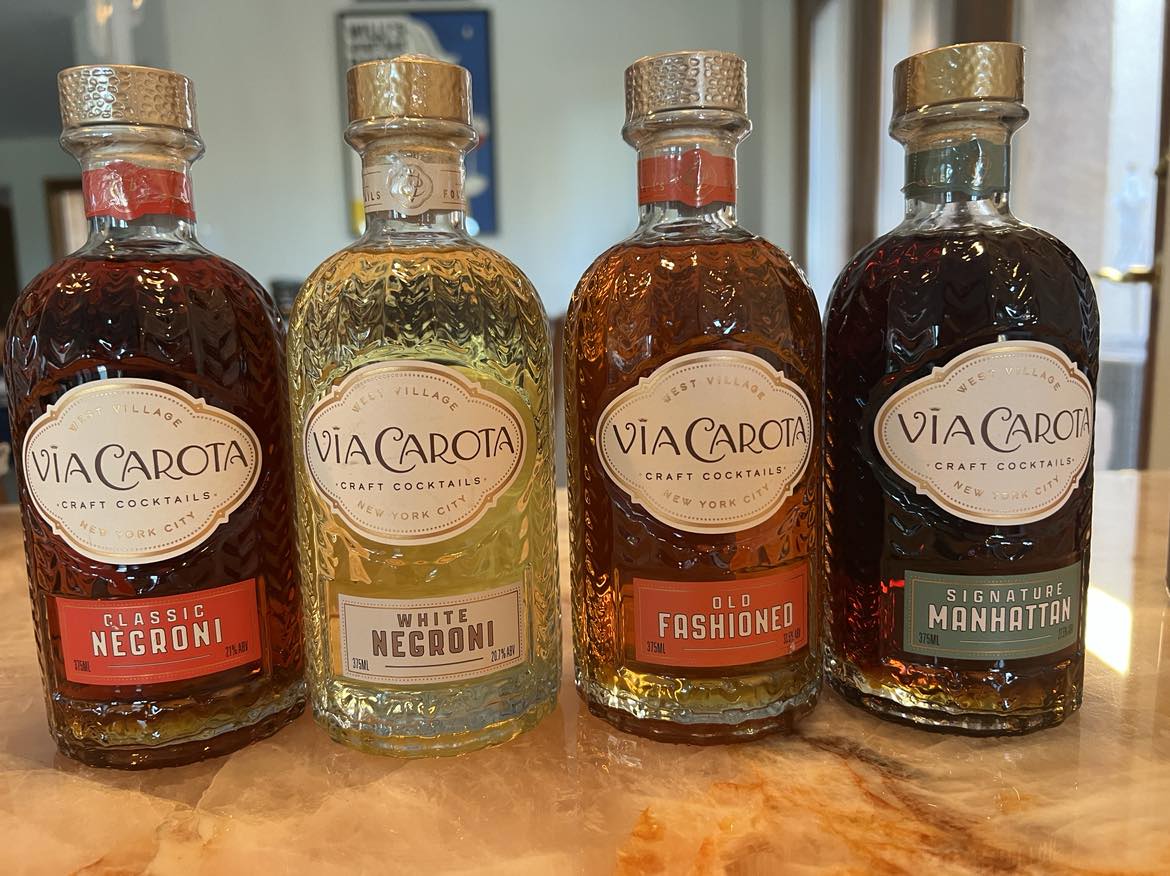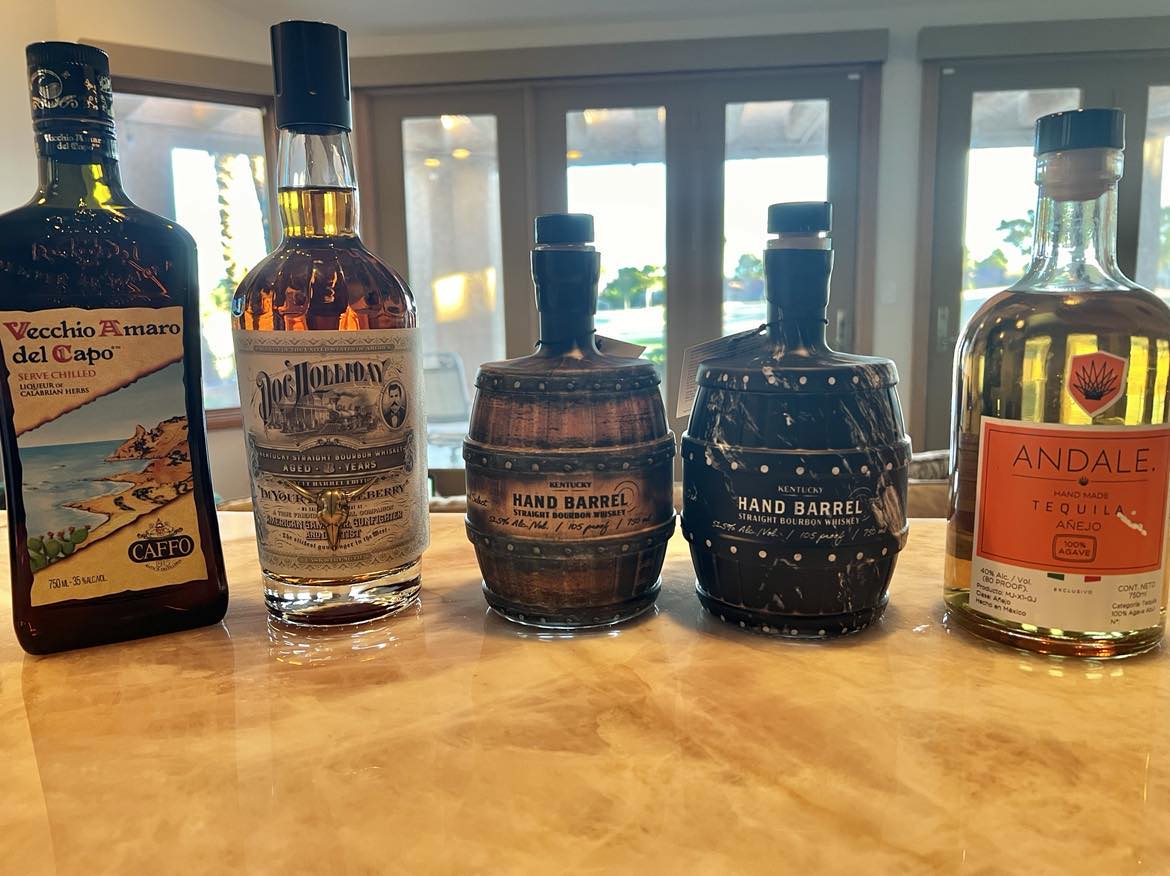As the verdant slopes of Mt. Meliton stretch down to mingle with the crystal clear waters of Toroneo Bay, 475 hectares of the largest Greek vineyards lie in amphitheatre-like formation. The “Slopes of Mt. Meliton” vineyards are some of the largest in Europe and a model of organic viniculture…Domaine Porto Carras. The vineyards of Domaine Porto Carras are located on the western coast of the Sithonia peninsula in Halkidiki, Greece; the Macedonia wine region….Old World Vines.
I was looking forward to my Greek wine education over a tasting of 6 wines, lunch and an interview at Ulysses Voyage, with hosts Yliana Stengou, Owner/General Manager of Domaine Porto Carras; Stefanos Kavaliotis, Export Executive; and Michael Pavlidis, Old World Vines distributor in San Diego.
Greek Lessons
Our Greek hosts had a grand time ordering in Greek at Ulysses. (Of course, they could have just been talking about us…who would know?) We were to have octopus, shrimp, chicken and beef in delicate sauces laden with butter, garlic and lemon. So far, it looked like pairing food with Greek wine was not difficult.
I learned:
The vines were planted in 1965 and the first wines were produced in 1972.
Porto Carras is the largest organic winery in Greece.
University of Bordeaux Professor Emile Peynaud (Pavlidis referred to him as “the father of Bordeaux”) helped select which grapes to grow in the area as determined by the soil and climate.
A total of 27 varietals were planted: 13 French and 14 Greek.
They grow Limnio, the oldest recorded varietal; and Assyrtiko, the oldest recorded white varietal. (See my tasting notes below, I quickly became a fan of the Assyrtiko for its low acidity and balance.)
The hillside slopes require no irrigation.
All of the wines hover at about 12% alcohol.
Better Than Expected Tasting
MELISSANTHI
Type: White Dry Wine, Cotes de Meliton, Appellation d’Origine de Qualite Superieure.
Varietal Composition: Assyrtiko, Athiri.
Analysis: Light-yellow color, with a delicate bouquet of lemon, ripe apricot and melon. Full mouth with nice finish.
Alcohol by vol.: 12%,
To Accompany: Variety of seafood, fresh fish and yellow cheeses.
EVE’S TASTING NOTES: Aromas of grapefruit, lemon-lime, melon and kiwi, something floral, followed in the mouth with the same lemon-lime, some grassiness, nicely balanced and soft finish.
ASSYRTIKO
Type: White dry, P.G.I. Halkidiki.
Varietal Composition: 100% Assyrtiko.
Organoleptic Analysis: Intense citrus aroma, minerality, high acidity a characteristic of the Assyrtiko variety, refreshing aftertaste.
To Accompany: Fresh seafood, fish on the grill.
EVE’S TASTING NOTES: Lemon, pear, wet pebbles and jasmine on the nose followed by a nice mouth-coating viscosity, same fruit carried through, very clean with the acidity dropping off nicely at the finish. Nothing like the over-powering acidity found in some Sauvignon Blancs.
MALAGOUZIA
Type: Dry White P.G.I. Sithonia.
Varietal Composition: 100% Malagouzia.
Organoleptic Analysis: Greenish yellow color, blossom and exotic fruits with notes of mint. Rich and round mouth, with apricot and peach flavors.
To Accompany: Fresh fish, white meat, pasta.
EVE’S TASTING NOTES: Pronounced “Mal-a-go-zia” this grape was revived in the 70s and 80s according to our hosts. I got mango, white peach, sweet apples, honey and white pepper on the nose followed by flavors of an unoaked Chardonnay, New Zealand Sauvignon Blanc with the addition of mango, and again, that wonderful low acidity.
LIMNIO
Type: Red Dry, P.D.O. Meliton Slopes.
Varietal Composition: Limnio.
Organoleptic Analysis: Ruby red color with spicy aromas of pepper and cinnamon. Full and easy mouth, with flavor of ripe blackberry fruits, delicate tannins.
|
To Accompany: Mediterranean cuisine, red meats. |
EVE’S TASTING NOTES: The color of a Pinot Noir but aromas of both a Pinot and Syrah with both red and black cherries, fig and cracked green pepper. When I tasted the wine I got the cherry notes as well as firm tannins, pepper and a wealth of spice. According to our hosts, Aristotle said Limnio was Plato’s favorite varietal.
MAGNUS BACCATA
Type: Red dry, P.G.I. Sithonia.
Varietal Composition: 50% Cabernet Sauvignon and 50% Syrah.
Organoleptic Analysis: Deep purple color, intense aromas of fruits of the forest, sweet spices and chocolate with hints of delicate oak. Rich mouth, balanced tannins and rich aromatic aftertaste.
To Accompany: Red meats, matured cheeses with intense flavor.
EVE’S TASTING NOTES: The blend of Cab and Syrah “on Greek soil” made this a stand out for me. The nose gave off whiffs of rich and velvety blueberry and blackberry fruit, dark chocolate. Going in for a taste I loved the spiciness of the wine, and the dark fruit, pepper and how the Cab hung in for a very balanced finish.
CHATEAU PORTO CARRAS
Type: Red Dry Wine, Cotes de Meliton, Appellation d’Origine de Qualite SupCrieure.
Varietal Composition: Cabernet Sauvignon, Cabernet Franc, Merlot, Limnio.
Analysis: Rich, deep blue, red color with purple reflections. Complex aromas with clear nose dominated by red fruits and vanilla. Delicate, smoky, with medium tannins. Excellent quality woods rich and long velvety finish. This wine has all the qualities
needed for long aging.
Alcohol by vol.: 13.5%.
To Accompany: Game, red meats and complicated sauces.
EVE’S TASTING NOTES: We had a 2005 vintage of this Bordeaux blend. They used the native Limnio grape over a Petit Verdot. Our hosts said that the wine does well in their microclimate as it has the same latitude as Bordeaux. I got dark fruit, black pepper, crushed blueberries, milk chocolate and a hint of caramel on the nose, followed by both light and dark fruit, incredibly balanced and easy to drink with or without food.
Information on these wines can be found here: http://www.portocarraswines.gr/en/wines.html
More on Greek wine here: http://www.allaboutgreekwine.com/wineries/porto_carras/
From Eve’s Wine 101 resident sommelier Gregory Alonzo
Assyrtiko is originally from Santorini, which may consider the island of Atlantis. It can be used for dry or sweet dessert wines. The grapes maintain their acidity and often used for blending purposes. It’s also used in Retsina wine.
Malgouzia is often blended with Assyrtiko. Makes a great dry white that pairs well with fruit, seafood, and white meat.
Melissanthi is often blended with Assyrtiko. Also makes a nice dry white. I am familiar with the one from Porto Carras. Pairs especially well with yellow cheeses. Of course, seafood as well.
Porto Carras also has a nice earthy Syrah and a very good Limnio Cabernet blend. Limnio is one of Greece’s most important red wines. It has a distinctive and great mineral aroma. Limnio is often used in blending and been around forever. Many people sell Greek reds short and think the only decent wines are the whites. It pairs particularly well with aged cheeses. It also pairs nicely with roasted dishes. In Greece, I often enjoyed this wine with game.
I think the secret to understanding and appreciating Greek wine is the Mediterranean diet. The wines pair perfectly with this style of cuisine.











I can almost hear the music and plates crashing down….Opah back at ya!